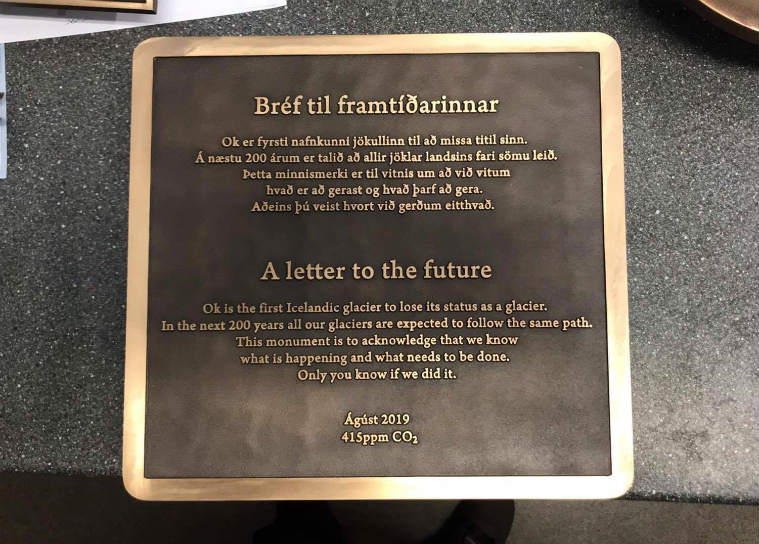
Scientists have bid farewell to Okjökull, the first Icelandic glacier lost to climate change. About 100 people climbed for two hours on Sunday to the top of the Ok volcano in west-central Iceland, where the Okjökull or “Ok glacier” once stood, to commemorate the funeral with poetry, moments of silence, and speeches, reported Aljazeera.
Okjökull used to stretch 16 square kilometres in 1890 and now there is only a small patch of ice in its place. Researchers installed a bronze memorial plaque at the site to serve as a tombstone for the glacier.
The plaque bore a message with the inscription– “A letter to the future”. Alongside the message, the plaque was also labelled “415 ppm CO2” — a reference to the record level of carbon dioxide measured in the atmosphere in May.
The message on the plaque reads in English and Icelandic, “Ok is the first Icelandic glacier to lose its status as a glacier. In the next 200 years, all our glaciers are expected to follow the same path. This monument is to acknowledge that we know what is happening and know what needs to be done. Only you know if we did it.”

The United Nations High Commissioner for Human Rights Mary Robinson and Iceland’s Prime Minister Katrin Jakobsdottir joined the group of researchers and Icelanders at the funeral ceremony.
Okjökull was stripped of its glacier status in 2014 by the geologists. According to a 2017 report from the University of Iceland, the 16 square kilometres large Okjökull measured just 0.7 square kilometres by 2012.
Also read | Nuke Mars: Elon Musk reiterates his Mars terraforming idea with T-shirts
Scientists warn that some 400 other glaciers on the subarctic island risk the same fate as this glacier. The island reportedly loses about 11 billion tonnes of ice per year, and scientists fear all the country’s glaciers will be gone by 2200.
Välkomnade @SwedishPM Stefan Löfven i Hellisheiði geotermiska kraftverk idag! pic.twitter.com/I4Betm5h6I
— Katrín Jakobsdóttir (@katrinjak) August 19, 2019
According to a study published by the International Union for Conservation of Nature in April, if greenhouse gas emissions continue at the current rate, nearly half of the world’s heritage sites could lose their glaciers by 2100. The human toll of the changing climate is also expected to get worse.
Also read | Russian land of permafrost and mammoths is thawing due to climate change
The melting of glaciers is only one outcome of the climate change, and it has the potential to affect food supplies, and displace billions of people as the sea levels rise.